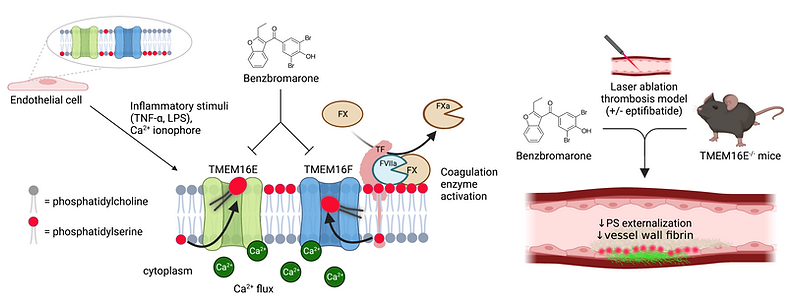
Research Areas
Ongoing Projects
TMEM16 phospholipid scrambling in endothelial biology
We recently demonstrated that the transmembrane proteins TMEM16E and TMEM16F support coagulation on the endothelial surface by allowing negatively charged phospholipids to pass to the outside of the cell. How these two “phospholipid scramblases” operate within endothelial cells to coordinate this process is unclear.

Using cell-based expression systems, microscopy, and animal models, we aim to determine the mechanisms and implications of phospholipid externalization in vascular cells. One basic question is why both TMEM16E and TMEM16F are required for regulation of procoagulant activity in endothelial cells? Another is how TMEM16 proteins regulate endothelial biology such as barrier function, formation and liberation of extracellular vesicles, and transcytosis. We identified that benzbromarone, a compound used medically worldwide to treat gout, can inhibit TMEM16 proteins and protect against thrombosis in animal models without increased bleeding. We are working to develop more specific inhibitors of TMEM16E and TMEM16F and study their role in prothrombotic conditions such as cancer, autoimmune disease, and COVID-19.
Regulation of endothelial cell cytoprotective signaling to protect against thromboinflammation
Our work has shown that activation of Tie2 receptor tyrosine kinase signaling promotes an anti-inflammatory and anti-thrombotic phenotype in endothelial cells. We are developing novel ways to activate receptor tyrosine kinase signaling using small molecules and optogenetics in order to target cytoprotective signaling to areas of vascular inflammation.